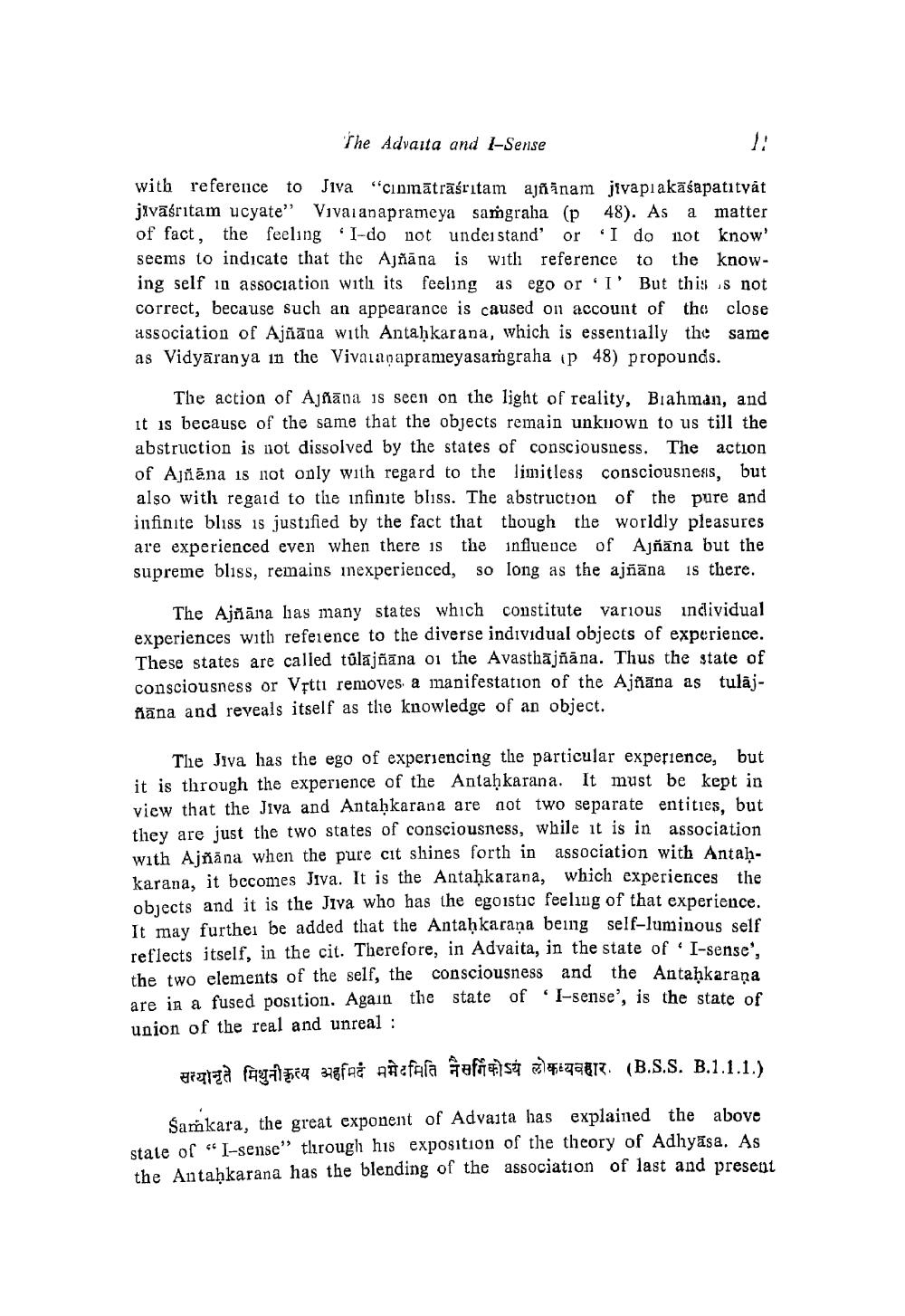________________
The Advaita and I-Sense
with reference to Jiva "cinmātrāśritam ajñānam jivapiakāśapatitvāt jivasritam ucyate" Vivai anaprameya samgraha (p 48). As a matter of fact, the feeling 'I-do not understand' or 'I do not know' seems to indicate that the Ajñāna is with reference to the knowing self in association with its feeling as ego or I' But this is not correct, because such an appearance is caused on account of the close association of Ajñana with Antaḥkarana, which is essentially the as Vidyaranya in the Vivaiaṇaprameyasamgraha ip 48) propounds.
same
The action of Ajñana is seen on the light of reality, Brahman, and it is because of the same that the objects remain unknown to us till the abstruction is not dissolved by the states of consciousness. The action of Añana is not only with regard to the limitless consciousness, but also with regard to the infinite bliss. The abstruction of the pure and infinite bliss is justified by the fact that though the worldly pleasures are experienced even when there is the influence of Ajñana but the supreme bliss, remains inexperienced, so long as the ajñāna is there.
The Ajñāna has many states which constitute various individual experiences with reference to the diverse individual objects of experience. These states are called tûlajñāna o1 the Avasthajñāna. Thus the state of consciousness or Vrtti removes a manifestation of the Ajñana as tulajñana and reveals itself as the knowledge of an object.
The Jiva has the ego of experiencing the particular experience, but it is through the experience of the Antaḥkarana. It must be kept in view that the Jiva and Antaḥkarana are not two separate entities, but they are just the two states of consciousness, while it is in association with Ajñāna when the pure cit shines forth in association with Antaḥkarana, it becomes Jiva. It is the Antaḥkarana, which experiences the objects and it is the Jiva who has the egoistic feeling of that experience. It may further be added that the Antaḥkarana being self-luminous self reflects itself, in the cit. Therefore, in Advaita, in the state of I-sense', the two elements of the self, the consciousness and the Antaḥkarana of I-sense', is the state of are in a fused position. Again the state union of the real and unreal:
सत्यानृते मिथुनीकृत्य अहमिदं ममेदमिति नैसर्गिकोऽयं लोकव्यवहार (B.S.S. B.1.1.1.)
Samkara, the great exponent of Advaita has explained the above state of "I-sense" through his exposition of the theory of Adhyasa. As the Antaḥkarana has the blending of the association of last and present




